Faculty publications

The Tiger Flu
(Arsenal Pulp Press: 2018)
A community of parthenogenic women, sent into exile by patriarchal and corporate Salt Water City, go to war against disease, technology, and an economic system that threatens them with extinction.
Kirilow is a doctor apprentice whose lover, Peristrophe, is a "starfish," a woman who can regenerate her own limbs and organs, which she uses to help her clone sisters whose organs are failing. When a denizen from Salt Water City suffering from a mysterious flu comes into their midst, Peristrophe becomes infected and dies, prompting Kirilow to travel to the city, where the flu is now a pandemic, to find a new starfish who will help save her sisters. There, Kirilow meets Kora, a girl-woman desperate to save her family from the epidemic. Kora has everything Kirilow is looking for, except the will to abandon her own family. But before Kirilow can convince her, both are kidnapped by a mysterious group of men to serve as test subjects for a new technology that can cure the mind of the body.

Scale in Literature and Culture
Michael Tavel Clarke and David Wittenberg, Eds.
(Palgrave MacMillan: 2018)
This collection emphasizes a cross-disciplinary approach to the problem of scale, with essays ranging in subject matter from literature to film, architecture, the plastic arts, philosophy, and scientific and political writing. Its contributors consider a variety of issues provoked by the sudden and pressing shifts in scale brought on by globalization and the era of the Anthropocene, including: the difficulties of defining the concept of scale; the challenges that shifts in scale pose to knowledge formation; the role of scale in mediating individual subjectivity and agency; the barriers to understanding objects existing in scalar realms different from our own; the role of scale in mediating the relationship between humans and the environment; and the nature of power, authority, and democracy at different social scales.
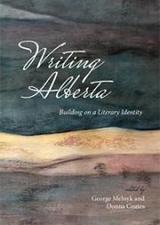
Writing Alberta: Building on a Literary Identity
George Melnyk and Donna Coates, Eds.
(University of Calgary Press: 2017)
Alberta writing has a long tradition. Beginning with the pictographs of Writing-on-Stone, followed by Euro-Canadian exploration texts, the post-treaty writing of the agrarian colonization period, and into the present era, Alberta writing has come to be seen as a distinct literature. In this volume Melnyk and Coates continue the project of scholarly analysis of Alberta literature that they began with Wild Words: Essays on Alberta Literature (2009). They argue that the essays in their new book confirm that Alberta's literary identity is historically contingent with a diverse, changing content, that makes its definition a work-in-progress. The essays in this volume provide contemporary perspectives on major figures in poetry and fiction, such as Robert Kroetsch, Sheila Watson, Alice Major, and Fred Stenson. Other essays bring to light relatively unknown figures such as the Serbian Canadian writer David Albahari and the pioneer clergyman Nestor Dmytrow.
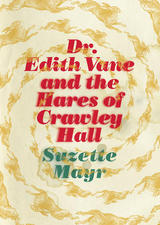
Dr. Edith Vane and the Hares of Crawley Hall
(Coach House Books: 2017)
Dr. Edith Vane, scholar of English literature, is contentedly ensconced at the University of Inivea. Her dissertation on African-Canadian pioneer housewife memoirist Beulah Crump-Withers is about to be published, and her job’s finally safe, if she only can fill out her AAO properly. She’s a little anxious, but a new floral blouse and her therapist's repeated assurance that she is the architect of her own life should fix that. All should be well, really. Except for her broken washing machine, her fickle new girlfriend, her missing friend Coral, her backstabbing fellow professors, a cutthroat new dean – and the fact that the sentient and malevolent Crawley Hall has decided it wants them all out, and the hall and its hellish hares will stop at nothing to get rid of them.
Like an unholy collision of Stoner, The Haunting of Hill House, Charlie Brown, and Alice in Wonderland, this audacious new novel by the Giller Prize–longlisted Suzette Mayr is a satire that takes the hallowed halls of the campus novel in fantastical – and unsettling – directions.

Calgary: City of Animals
Jim Ellis, Ed.
(University of Calgary Press: 2017)
How have our interactions with animals shaped Calgary? What can we do to ensure that humans and animals in the city continue to co-exist, and even flourish together? This wide-ranging book explores the ways that animals inhabit our city, our lives and our imaginations.
Essays from animal historians, wildlife specialists, artists and writers address key issues such as human-wildlife interactions, livestock in the city, and animal performers at the Calgary Stampede.
Contributions from some of Calgary's iconic arts institutions, including One Yellow Rabbit Performance Theatre, Decidedly Jazz Danceworks, and the Glenbow Museum, demonstrate how animals continue to be a source of inspiration and exploration for fashion, art, dance, and theatre.
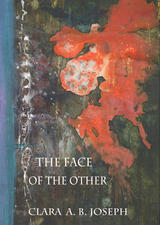
The Face of the Other
(Interactive Publications Pty. Ltd: 2016)
The Face of the Other is Clara Joseph’s first book of poetry. It takes inspiration from the works of the Jewish-French master philosopher, Emmanuel Levinas, especially his ethical project of the responsibility of the self when encountering the other person.
An evocative and thought-provoking collection of poetry that reveals more to the reader with each reread. Clara Joseph covers a wide range of themes and ideas whilst tying them all together under the repeating image of the face, seen from many different angles and in different guises. The author seamlessly transitions between personal poems of change, transition, or personal philosophizing, to more public issues of justice and injustice, violation and destruction, all the while returning – unblinking – to the perception of the other within the world. Ultimately, this book is about what it means to meet the other person.

Early Modern Studies after the Digital Turn
Laura Estill, Diane K. Jakacki, and Michael Ullyot, Eds.
(Iter Press/Arizona Center for Medieval and Renaissance Studies: 2016)
The essays collected in this volume address the digital humanities’ core tensions: fast and slow; surficial and nuanced; quantitative and qualitative. Scholars design algorithms and projects to process, aggregate, encode, and regularize historical texts and artifacts in order to position them for new and further interpretations. Every essay in this book is concerned with the human-machine dynamic, as it bears on early modern research objects and methods. The interpretive work in these pages and in the online projects discussed orients us toward the extensible future of early modern scholarship after the digital turn.

Natalie Wood
(Palgrave Higher Education: 2016)
Throughout her career, Natalie Wood teetered precariously on the edge of greatness. Trained in the classical Hollywood studio style, but best mentored by Method directors, Wood was the ideal actress for roles depicting shifting perceptions of American womanhood. Nonetheless, while many of her films are considered classics of mid-twentieth century American cinema, she is less remembered for her acting than she is for her mysterious and tragic death.
Rebecca Sullivan's lucid and engaging study of Natalie Wood's career sheds new light on her enormous, albeit uneven, contributions to American cinema. This persuasive text argues for renewed appreciation of Natalie Wood by situating her enigmatic performances in the context of a transforming star industry and revolutionary, post-war sexual politics.
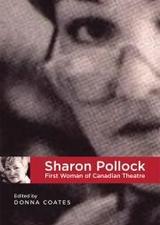
Sharon Pollock: First Woman of Canadian Theatre
Donna Coates, Ed.
(U of Calgary Press: 2015)
As playwright, actor, director, teacher, mentor, theatre administrator, and critic, Sharon Pollock has played an integral role in the shaping of Canada's national theatre tradition, and she continues to produce new works and to contribute to Canadian theatre as passionately as she has done over the past fifty years. Pollock is nationally and internationally respected for her work and support of the theatre community. She has also played a major role in informing Canadians about the "dark side" of their history and current events. This collection, comprised entirely of new and original assessments of her work and contribution to theatre, is both timely and long overdue.
Includes a new play titled Sharon's Tongue by the Playing with Pollock Collective

Pornography
Rebecca Sullivan & Ian McKee
(Polity Press: 2015)
Written for a broad audience and grounded in cutting-edge, contemporary scholarship, this volume addresses some of the key questions asked about pornography today. What is it? For whom is it produced? What sorts of sexualities does it help produce? Why should we study it, and what should be the most urgent issues when we do? What does it mean when we talk about pornography as violence? What could it mean if we discussed pornography through frameworks of consent, self-determination and performance?
This book places the arguments from conservative and radical anti-porn activists against the challenges coming from a new generation of feminist and queer porn performers and educators. Combining sensitive and detailed discussion of case studies with careful attention to the voices of those working in pornography, it provides scholars, activists and those hoping to find new ways of understanding sexuality with the first overview of the histories and futures of pornography.
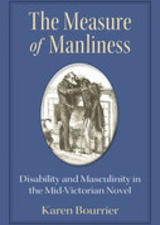
The Measure of Manliness
(U of Michigan Press: 2015)
The Measure of Manliness is among the first books to focus on representations of disability in Victorian literature, showing that far from being marginalized or pathologized, disability was central to the narrative form of the mid-century novel. Mid-Victorian novels evidenced a proliferation of male characters with disabilities, a phenomenon that author Karen Bourrier sees as a response to the rise of a new Victorian culture of industry and vitality, and its corollary emphasis on a hardy, active manhood. The figure of the voluble, weak man was a necessary narrative complement to the silent, strong man. The disabled male embodied traditionally feminine virtues, softening the taciturn strong man, and eliciting emotional depths from his seemingly coarse muscular frame. Yet, the weak man was able to follow the strong man where female characters could not, to all-male arenas such as the warehouse and the public school.
The analysis yokes together historical and narrative concerns, showing how developments in nineteenth-century masculinity led to a formal innovation in literature: the focalization or narration of the novel through the perspective of a weak or disabled man. The Measure of Manliness charts new territory in showing how feeling and loquacious bodies were increasingly seen as sick bodies throughout the nineteenth century. The book will appeal to those interested in disability studies, gender and masculinity studies, the theorization of sympathy and affect, the recovery of women’s writing and popular fiction, the history of medicine and technology, and queer theory.

Twelve-Cent Archie
(Rutgers UP: 2015)
For over seventy-five years, Archie and the gang at Riverdale High have been America’s most iconic teenagers, delighting generations of readers with their never-ending exploits. But despite their ubiquity, Archie comics have been relatively ignored by scholars—until now.
Twelve-Cent Archie is not only the first scholarly study of the Archie comic, it is an innovative creative work in its own right. Inspired by Archie’s own concise storytelling format, renowned comics scholar Bart Beaty divides the book into a hundred short chapters, each devoted to a different aspect of the Archie comics. Fans of the comics will be thrilled to read in-depth examinations of their favorite characters and motifs, including individual chapters devoted to Jughead’s hat and Archie’s sweater-vest. But the book also has plenty to interest newcomers to Riverdale, as it recounts the behind-the-scenes history of the comics and analyzes how Archie helped shape our images of the American teenager.

Sexual Enjoyment in British Romanticism
(McGill-Queen's UP: 2015)
Debates about gender in the British Romantic period often invoked the idea of sexual enjoyment: there was a broad cultural concern about jouissance, the all-engulfing pleasure pertaining to sexual gratification. On one hand, these debates made possible the modern psychological concept of the unconscious - since desire was seen as an uncontrollable force, the unconscious became the repository of disavowed enjoyment and the reason for sexual difference. On the other hand, the tighter regulation of sexual enjoyment made possible a vast expansion of the limits of imaginable sexuality.
In Sexual Enjoyment and British Romanticism, David Sigler shows how literary writers could resist narrowing gender categories by imagining unregulated enjoyment. As some of the era's most prominent thinkers - including Edmund Burke, Mary Wollstonecraft, Mary Robinson, Joanna Southcott, Charlotte Dacre, Jane Austen, and Percy Bysshe Shelley - struggled to understand sexual enjoyment, they were able to devise new pleasures in a time of narrowing sexual possibilities.

Bonnie Sherr Klein’s ‘Not a Love Story’
(University of Toronto Press: 2014)
Bonnie Sherr Klein’s “Not a Love Story” provocatively examines the first Canadian film to explore pornography’s role in society from a feminist perspective. Directed by Bonnie Sherr Klein for Studio D, the National Film Board’s women’s unit, the film featured both Klein and Lindalee Tracey, an activist, performance artist, and stripper, as they toured the seamier fringes of pornography and sex work in Montreal, Toronto, New York, and San Francisco. Censored in Ontario upon its release in 1981, Not a Love Story collided with the escalating “Porn Wars” that contributed to the tearing apart of the second-wave feminist movement.
Using interviews with members of the crew and extensive archival research into the production process, Rebecca Sullivan delves into the creation and reception of Not a Love Story to explore the issues of censorship, sexual labour and performance, and documentary practice that the film raised. An insightful analysis not just of the film itself but of the issues which surround feminist analyses of pornography as a genre, Bonnie Sherr Klein’s “Not a Love Story” offers a fresh assessment of Canada’s women’s movement and the politics of feminist filmmaking during a volatile era.

Sentimental Readers: The Rise, Fall and Revival of a Disparaged Rhetoric
(University of Iowa Press: 2013)
How could novels like Uncle Tom’s Cabin change the hearts and minds of thousands of mid-nineteenth-century readers, yet make so many modern readers cringe at their over-the-top, tear-filled scenes? In her new book, Sentimental Readers: The Rise, Fall and Revival of a Disparaged Rhetoric, Faye Halpern explains why sentimental rhetoric was so compelling to readers of that earlier era, why its popularity waned in the latter part of the nineteenth century, and why today it is generally characterized as overly emotional and artificial. But she also does more: she demonstrates that this now despised rhetoric remains relevant to contemporary writing teachers and literary scholars.
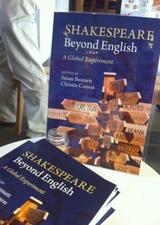
Shakespeare Beyond English: A Global Experiment
Susan Bennett and Christine Carson, Eds.
(Cambridge University Press: 2013)
A collection of more than 40 articles on last year’s Globe-to-Globe Festival. Part of London’s 2012 Cultural Olympiad, the Festival offered an unprecedented opportunity to see all of Shakespeare’s plays performed in a six-week period and in languages other than English. This book is the only complete critical record of that event. Cambridge University Press and Shakespeare's Globe co-hosted a launch for Shakespeare Beyond English and its editors in the Upper Foyer of the theatre on August 27th, 2013.
Creative Writing Research Group publications

The Unravelling
Clem Martini and Olivier Martini
(Freehand Books: 2017)
Olivier Martini and his mother, Catherine, have lived together since he was diagnosed with schizophrenia thirty-six years ago. It hasn’t always been a perfect living situation, but it’s worked — Catherine has helped Olivier through the ups and downs of living with a mental illness, and Olivier has cared for his aging mother as her mobility becomes limited, and Olivier’s brothers Clem and Nic have provided support to both as well. But then Olivier experiences a health crisis at the exact same time that his mother starts slipping into dementia.
The Martini family’s lifelong struggle with mental illness is suddenly complicated immeasurably as they begin to navigate the convoluted world of assisted living and long-term care. With anger, dry humour, and hope, The Unravelling tells the story of one family’s journey with mental illness, dementia, and caregiving, through a poignant graphic narrative from Olivier accompanied by text from his brother, award-winning playwright and novelist Clem Martini.
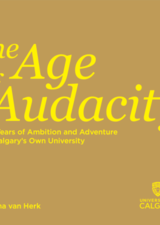
The Age of Audacity: 50 Years of Ambition and Adventure at Calgary's Own University
(University of Calgary Press: 2016)
This intense history of the University of Calgary gathers the spirit of that place of higher learning into these pages.
“The University of Calgary is a contemporary university, dynamic and spirited. Chameleonic, even brash, it punches above its weight in terms of time and temper, ever willing to take risks, brimming with purpose and exuberance. Vigorous, current, and futuristic in outlook, its tradition of excellence is nevertheless as diligent as that of a much older school burnished by dreaming spires. Certain of how far it has come, and optimistic about how far it can go, this place relishes its distinctiveness.”
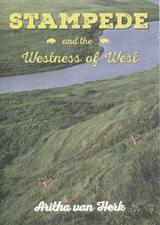
Stampede and the Westness of the West
(Frontenac House: 2016)
Calgary was the Cultural Capital of Canada in 2012 when the Stampede hosted Aritha van Herk as Artist in Residence, providing her with a privileged insider’s view of the Greatest Outdoor Show on Earth.
Stampede and the Westness of West is the result of her unique insights, a prose/poetry book that is meditative, imagistic, historical and speculative while eliciting all the humour and joy and occasional critique that the Stampede demands. Stampede juxtaposes references to Siena and Shakespeare and the Vogelherd Cave, the history of pancakes, and the history of the word stampede alongside speculations on lust, love, fences and Guy Weadick.
One line sums it up: “Stampede. There is only one, and that is Calgary’s.”

Slanting I, Imagining We: Asian Canadian Literary Production in the 1980s and 1990s
(Wilfrid Laurier University Press: 2014)
The 1980s and 1990s are a historically crucial period in the development of Asian Canadian literature. Slanting I, Imagining We: Asian Canadian Literary Production in the 1980s and 1990s contextualizes and reanimates the urgency of that period, illustrates its historical specificities, and shows how the concerns of that moment—from cultural appropriation to race essentialism to shifting models of the state—continue to resonate for contemporary discussions of race and literature in Canada. Larissa Lai takes up the term "Asian Canadian” as a term of emergence, in the sense that it is constantly produced differently, and always in relation to other terms—often “whiteness” but also Indigeneity, queerness, feminism, African Canadian, and Asian American. In the 1980s and 1990s, “Asian Canadian” erupted in conjunction with the post-structural recognition of the instability of the subject. But paradoxically it also came into being through activist work, and so depended on an imagined stability that never fully materialized. Slanting I, Imagining We interrogates this fraught tension and the relational nature of the term through a range of texts and events, including the Gold Mountain Blues scandal, the conference Writing Thru Race, and the self-writings of Evelyn Lau and Wayson Choy.

Monoceros
(Coach House Books, 2011)
A seventeen-year-old boy, bullied and heartbroken, hangs himself. And although he felt terribly alone, his suicide changes everyone around him.
His parents are devastated. His secret boyfriend’s girlfriend is relieved.
His unicorn- and virginity-obsessed classmate, Faraday, is shattered; she wishes she had made friends with him that time she sold him an Iced Cappuccino at Tim Hortons. His English teacher, mid-divorce and mid-menopause, wishes she could remember the dead student’s name, that she could care more about her students than her ex’s new girlfriend. Who happens to be her cousin. The school guidance counsellor, Walter, feels guilty – maybe he should have made an effort when the kid asked for help.
Monoceros is a masterpiece of the tragicomic; by exploring the effects of a suicide on characters outside the immediate circle, Mayr offers a dazzlingly original look at the ripple effects – both poignant and funny – of a tragedy. A tender, bold work.

How to Write
(Talonbooks, 2010)
How to Write is an instruction manual for the demise of ownership. A multitudinous dialogue of writers and subjects, words and contexts, it unleashes a cacophony of voices where authors don’t own their words, they merely rent them from other authors. Containing ten pieces of conceptual prose ranging from the purely appropriated through the entirely recomposed, and covering a range of texts from the anonymous to the famous, it includes samplings from, among many others: Lawrence Sterne; Agatha Christie; Bob Kane; Roy Lichtenstein; and every piece of text within one block of the author’s home. Its title story is an exhaustive record of every incidence of the words “write” or “writes” in forty different English-language texts picked aesthetically to represent a disparate number of genres.

Bitter Medicine: A Graphic Memoir of Mental Illness
Clem Martini and Olivier Martini
(Broadview Press, 2010)
In 1976, Ben Martini was diagnosed with schizophrenia. A decade later, his brother Olivier was told he had the same disease. For the past thirty years the Martini family has struggled to comprehend and cope with a devastating illness, frustrated by a health care system lacking in resources and empathy, the imperfect science of medication, and the strain of mental illness on familial relationships.
Throughout it all, Olivier, an accomplished visual artist, drew. His sketches, comic strips, and portraits document his experience with, and capture the essence of, this all too frequently misunderstood disease. In Bitter Medicine, Olivier’s poignant graphic narrative runs alongside and communicates with a written account of the past three decades by his younger brother, award-winning author and playwright Clem Martini. The result is a layered family memoir that faces head-on the stigma attached to mental illness.
Shot through with wry humour and unapologetic in its politics, Bitter Medicine is the story of the Martini family, a polemical and poetic portrait of illness, and a vital and timely call for action.
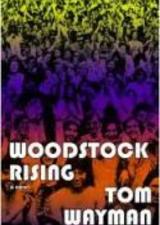
Woodstock Rising
(Dundurn, 2009)
Activist young people are making major societal changes this year in Egypt and Tunisia. Woodstock Rising looks back at a time when student activists in North America were fighting for social change. Set mainly in southern California, and braiding actual events with fictitious ones, Woodstock Rising follows a Canadian grad student through the tumultuous fall, winter and spring of 1969-1970 as he struggles to end the Vietnam War, end the draft, battle racism and imperialism, and get a date.

